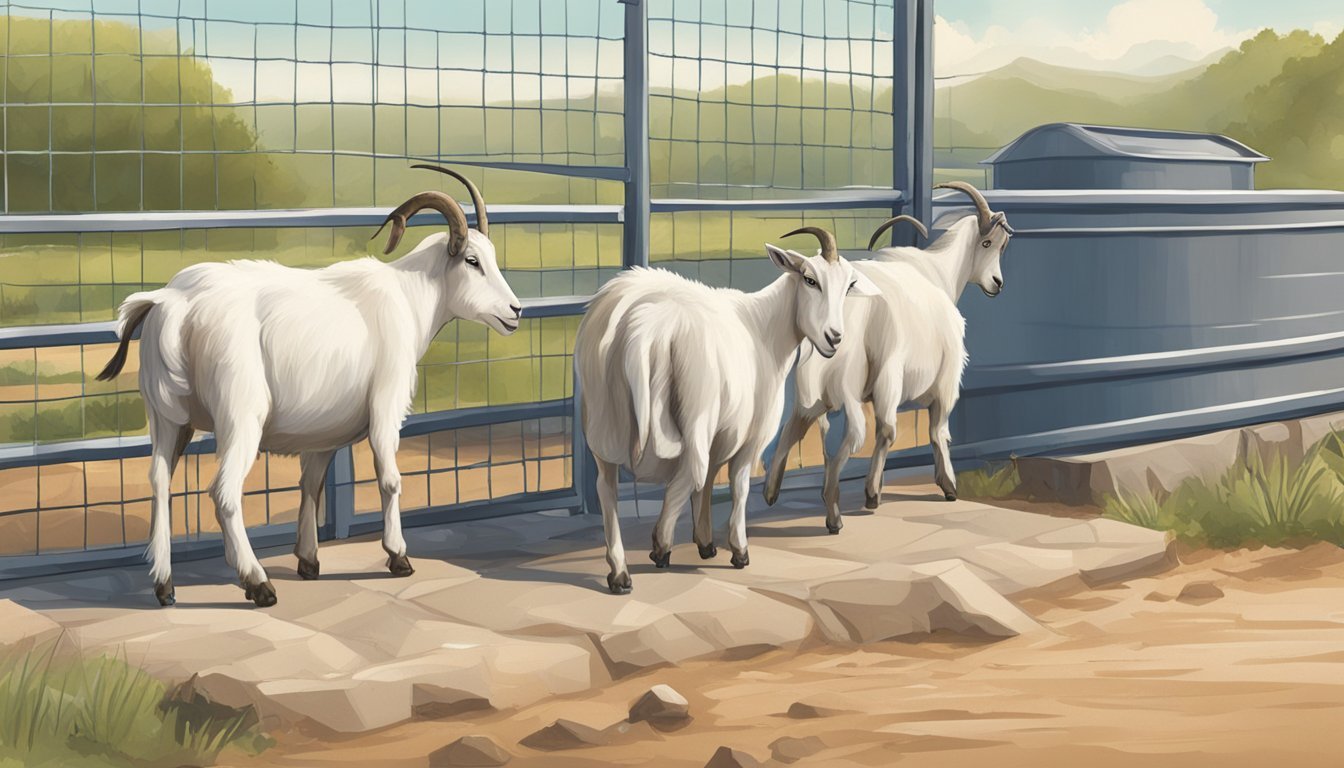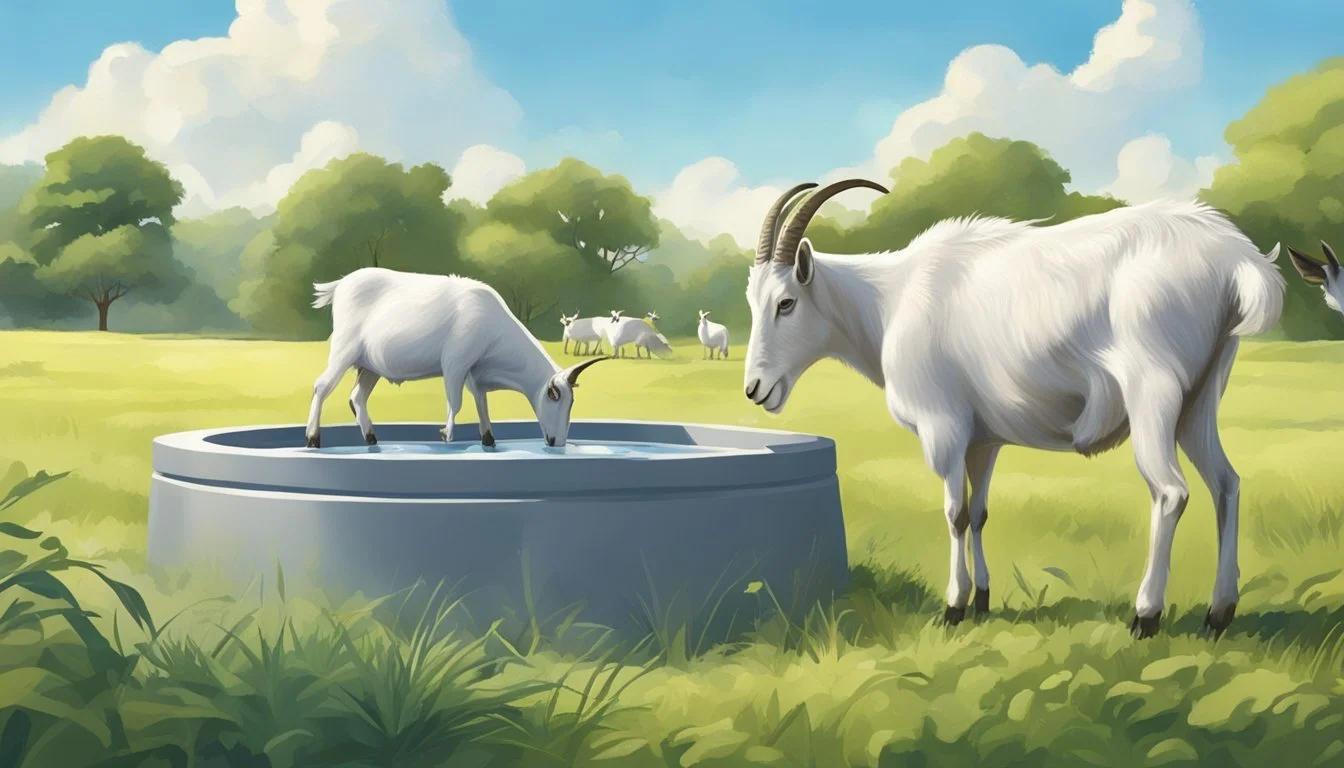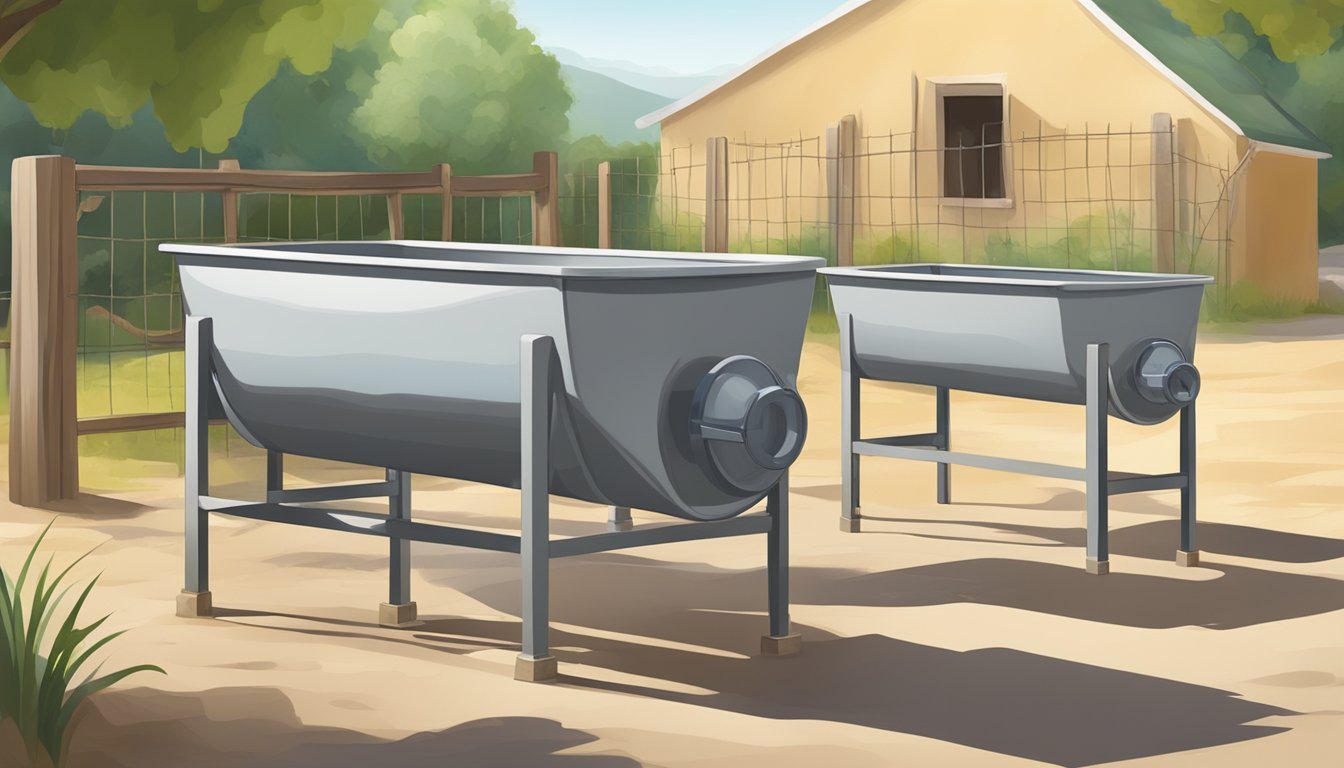How do I ensure that my goats have access to clean water at all times
Essential Tips for Constant Hydration
Proper hydration is crucial for the health and productivity of goats. Goats require a consistent supply of clean water to maintain vital bodily functions and support their digestion, lactation, and temperature regulation. Ensuring that goats have access to clean water can prevent various health issues, ranging from dehydration to disease.
Maintaining clean and fresh water for goats involves using hygienic, non-toxic water containers that are easily accessible. These containers need to be sturdy to avoid tipping and should be placed at the right height so that goats can drink without straining. Regular cleaning of water containers is necessary to prevent the buildup of algae and bacteria, which can contaminate the water and lead to health problems.
In different climates or during certain life stages, goats' water needs may change. For instance, lactating does or goats in hot weather conditions will require more water compared to others. Providing multiple sources of water can cater to these varying requirements, ensuring that all goats remain well-hydrated. Monitoring water intake and adjusting it according to the goats' needs is an effective way to manage their hydration levels.
Understanding Goat Hydration Needs
Goat owners must recognize that consistent access to clean water is crucial for maintaining the health and productivity of their herd. Hydration affects everything from body temperature regulation to lactation in goats.
Importance of Hydration for Goats' Health
Hydration plays a vital role in a goat's health. It aids in digestion, waste excretion, and nutrient absorption, and is essential for maintaining normal body temperature and overall physiological processes. For milking goats, water is even more critical, as it directly influences milk production. Lactating does require a larger quantity of water to replace fluids lost during milk synthesis.
Factors Influencing Water Needs
Size and Breed: Smaller breeds, such as the Nigerian Dwarf, consume less water than larger breeds like the Nubian. Life Stage: Pregnant or lactating does need more water compared to non-lactating adults. Climate: Hot weather increases water consumption, as goats need to drink more to regulate their body temperature.
Recognizing Signs of Dehydration
Dehydration can lead to serious health issues in goats, including reduced feed intake, lethargy, and kidney failure. Owners should be aware of reduced water intake, sunken eyes, dry mucous membranes, and a poor skin tent test as indicators of dehydration. Immediate veterinary care is required to address dehydration in goats effectively.
Water Quality and Cleanliness
Ensuring goats have access to clean, fresh water is critical for their health. Contaminants must be rigorously kept at bay to prevent the growth of algae and accumulation of debris in water sources.
Maintaining Clean Water Sources
It is important to regularly clean water containers to prevent the buildup of harmful substances. Using non-toxic, easy-to-clean materials for water containers can significantly reduce the risk of contamination. Water should be refreshed daily, and one can employ automatic goat waterers that help maintain a consistent supply of clean water and minimize the manual labor involved in the process.
Preventing Algae and Debris
To prevent algae, one should position water containers in shaded areas and avoid direct sunlight which promotes algae growth. Additionally, employing a regular cleaning schedule ensures that algae spores and debris do not have the time to establish themselves. Covering water sources can also be beneficial in keeping out debris, like leaves or straw, which could contaminate the water supply.
Water Supply Infrastructure
The infrastructure for providing clean water to goats involves a thoughtful selection of waterers and troughs, alongside a commitment to regular maintenance. These components are central to ensuring a consistent and clean water supply system for goats.
Types of Waterers and Troughs
Waterers and troughs come in various designs to match different needs and herd sizes. Troughs are simple, open containers which can be made from various materials, including metal and plastic. For ease of use, automatic waterers are connected to a continuous water source and designed to refill as needed, ensuring a constant supply of water.
On the other hand, buckets provide a portable option, though they require more frequent refilling and monitoring to maintain cleanliness. For colder climates, heated water buckets prevent water from freezing, ensuring goats have access to liquid water even in freezing conditions.
Installation and Maintenance Tips
Proper installation of waterers and troughs is crucial. It's important to position them at a height accessible to all goats without straining. Stability is key, so waterers should be firmly secured to prevent tipping. For automatic waterers, it's critical to follow the manufacturer's guidelines for installation to ensure efficient operation.
Regular maintenance includes daily cleaning to prevent algae growth and the buildup of debris. This can generally be accomplished by scrubbing and rinsing. For heated water buckets, one should periodically examine the electrical components and insulation to ensure safety and functionality. An optimal water supply infrastructure, when combined with diligent maintenance, forms the backbone of healthy hydration practices for goats.
Ensuring Constant Access to Water
When raising goats, it's crucial to provide them with constant access to clean water. This not only helps maintain their health but also supports vital bodily functions and milk production.
Accessibility and Reliability
Water containers for goats should be strategically placed so that they are easily accessible to all goats at all times. This means installing water sources that are at the right height for goats to drink comfortably and ensuring that these sources are sturdy and resistant to tipping or contamination. Automatic waterers can be a reliable solution, as they are designed to provide a continual supply of water without the need for constant human intervention. Additionally, they can be equipped with features that prevent freezing in colder climates, which can be invaluable for ensuring a reliable water supply.
Sizing and Capacity Planning
The size and number of water containers will depend on the size of the herd. As a general guideline, the chosen system should hold enough water to meet the daily needs of multiple goats, factoring in not just the number of animals but also environmental conditions and the goats' life stages, which can influence water intake. Troughs or buckets should be of a size that can supply water to several goats simultaneously. Planning for extra capacity can be especially important during peak times such as lactation or hot weather, when goats consume more water. It's also preferable to have multiple water sources to avoid competition and ensure that every goat has access to water, a concept shared by sources like Farmyard Fables.
Seasonal Considerations for Watering Goats
When managing a herd of goats, it's crucial to adapt their water supply to the prevailing weather conditions. In the summer, goats require ample water to stay hydrated, while in winter, keeping water from freezing is a significant concern. These strategies ensure goats have the necessary water year-round.
Adapting to Hot Weather
During the summer months, it is imperative to ensure that goats have consistent access to fresh and clean water. Evaporation and increased consumption can quickly deplete water sources, so water containers should be checked and refilled multiple times a day. Some farmers prefer the use of automatic waterers to maintain a steady supply. Adequate shade should also be provided, allowing goats to escape the heat, reducing their risk of heat stress, and thereby managing their hydration needs more effectively.
Managing Water in Cold Weather
In colder months, preventing water from freezing is essential. Options such as heated water buckets can be employed, although farmers without electricity must resort to alternative methods. Insulation techniques, such as burying the water container partially or mounding soil around it, can help retain heat in the water. Using materials like straw or hay bales for insulation further aids in minimizing the water's exposure to freezing temperatures. Regular checks are critical to ensure water sources remain unfrozen and accessible.
Feeding and Nutrition Strategies
To maintain optimal health, goats require a careful balance of water intake and nutrition, as well as appropriate supplementation. Ensuring they have constant access to clean water and a diet complemented with essential minerals and salts is paramount.
Balancing Water Intake with Nutrition
For goats, water is as essential as their solid feed. They should consume approximately 2.5%-3% of their body weight in dry feed each day, with lactating does requiring more to support milk production. A goat's energy and nutrition needs vary depending on its life stage, such as growth or pregnancy, necessitating adjustments in feed types and quantities.
Adult Goats: Should have access to a balanced diet of forage and concentrate.
Lactating Does: Require additional feed to compensate for energy spent on milk production.
Kids and Young Goats: Need higher protein for growth.
Their water needs correlate with their nutritional intake, increasing with higher amounts of dry feed and in warmer climates. Producers must ensure that clean, fresh water is available at all times to facilitate digestion and metabolic processes.
Supplements and Salt Block Usage
Minerals and salts are critical to a goat's diet, supporting bone health and enzymatic functions. Goats often fall short on minerals like selenium and copper when relying on pasture and forage alone. Supplements can be provided to offset this deficiency.
Mineral Blocks or Licks: These should be placed in accessible areas for goats to self-regulate intake.
Supplemental Feeding: Can be customized to the specific needs of the herd, considering local soil mineral content and available forage.
Using feed with incorporated minerals or providing a free-choice mineral supplement ensures that goats have a complete spectrum of nutrients. Additionally, salt blocks should be available to encourage adequate water consumption and prevent mineral imbalances.
Health Monitoring and Care
Ensuring goats have access to clean water is only one aspect of maintaining their overall health. Regular health assessments and timely care are crucial for preventing and addressing health issues.
Daily Health Checks
One should perform daily health checks to monitor a goat's condition. Observing the goat's behavior and appearance for any irregularities is essential. During these checks, look for signs of dehydration such as sunken eyes or lethargy, which indicate an immediate need for clean water access. Additionally, a healthy goat should be alert, sociable, and exhibit a shiny hair coat. These checks should include a review of the goat's appetite and cud chewing habits, both indicators of their health status.
Addressing Health Concerns
When health problems arise, it is important to act swiftly. Health issues often present as changes in behavior or physical appearance. For instance, a goat that suddenly isolates itself or has dull, rough hair may be experiencing health issues. Parasites are a common concern, and one must inspect goats regularly for signs of infestation and provide appropriate treatments as needed. Regularly keeping your goats healthy involves a clean environment, proper nutrition, and preventative measures against common diseases. When a goat's overall health is in question, it is important to consult with a veterinarian to ensure proper diagnosis and treatment.
Best Practices for Goat Hydration
Ensuring goats have constant access to clean water is crucial for their health and productivity. Implementing a rigorous management routine for their hydration can prevent dehydration and promote overall wellbeing.
Regular Cleaning and Refilling Routines
It is essential to establish a regular cleaning schedule for all water containers to prevent the build-up of algae, bacteria, and other contaminants. Goats require fresh water daily, so containers should be emptied, scrubbed clean, and refilled at least once every 24 hours. During colder months, checking for and breaking any ice formations is necessary to maintain access to water.
Monitoring and Adjusting Water Quality
Observing the goats' water intake and quality is a fundamental aspect of hydration management. Water should be tested regularly for pH levels and contaminants to ensure it is safe for consumption. Any fluctuation in water quality can affect a goat's health, indicating the potential need for water treatment solutions or adjustments in the cleaning routine. If water quality is compromised, immediate steps should be taken to rectify the issue.







